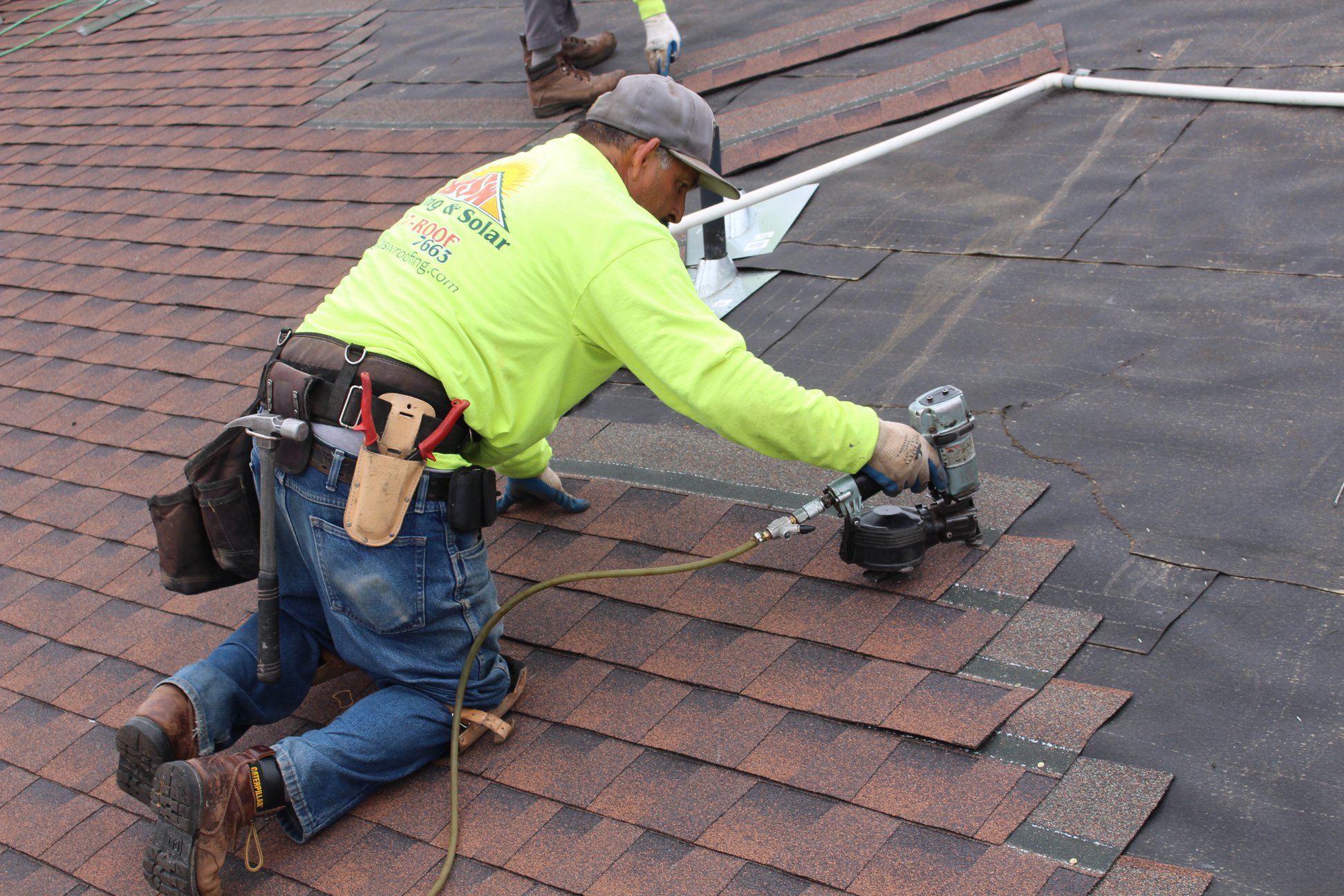A Comprehensive Look at Roofing Companies Gainesville Residents Recommend
A Comprehensive Look at Roofing Companies Gainesville Residents Recommend
Blog Article
Ideal Practices for Ensuring Appropriate Roofing Air Flow
Making sure proper roof ventilation is critical for the long life and performance of a roof. A balanced consumption and exhaust air vent ratio, generally 1:300, plays an essential function, with consumption vents preferably placed at the reduced side of the roof covering for cool air access and exhaust vents at the top for warm air exit. Normal inspections to identify clogs and preserve clear airflow are extremely important. Moreover, keeping insulation far from vents is essential to stop air flow restriction. Recognizing these fundamental aspects sets the stage for more thorough insights right into installment and maintenance methods that can significantly enhance your roof's performance.
Understand Air Flow Fundamentals
Effectively understanding air flow essentials is essential for making sure the long life and effectiveness of roof. Effective ventilation minimizes moisture accumulation and temperature extremes in the attic, both of which can result in considerable structural damage gradually. A well-ventilated roof covering assists in protecting against usual issues such as mold and mildew development, timber rot, and ice dams, which can endanger the honesty of the roof covering products and the underlying frameworks.
The key objective of ventilation is to facilitate the movement of air, enabling for a regular exchange between the interior and outside environments. This balance is achieved with a mix of consumption and exhaust vents that collaborate to preserve ideal airflow. Consumption vents, generally located along the soffits or eaves, permit fresh air to get in the attic area, while exhaust vents, commonly located at or near the roof ridge, enable hot, moist air to leave.
Key factors influencing the performance of roofing ventilation include correct placement, sufficient sizing, and making certain that both intake and exhaust vents are unobstructed. Normal inspection and maintenance are important to determine potential clogs, damage, or inefficiencies in the air flow system, consequently protecting the roof's efficiency and durability.
Sorts Of Roofing System Vents
Roofing system vents play an essential duty in keeping efficient attic room air flow and, by expansion, the overall wellness of the roofing system. Numerous kinds of roof vents are available, each with distinct advantages tailored to specific roof needs. Ridge vents, for instance, are installed along the roofing system's peak, enabling cozy, humid air to get away from the attic room. They supply continual ventilation and mix seamlessly with the roofline, making them both efficient and visually pleasing.

Soffit vents are mounted under the eaves and job in tandem with roofing vents to guarantee a balanced intake and exhaust system. By permitting cooler air to enter from below, soffit vents assist in the expulsion of warm air via upper vents. Gable vents, situated on the outside walls of the attic, deal another reliable service, specifically in homes with gable roofs.
Assess Your Present Air Flow

Following, think about the age and problem of your roof covering products and air flow elements. Older systems may not adhere to existing building regulations or may have weakened gradually, decreasing their efficiency. Conduct a thorough evaluation to determine any indications of damage, such as corrosion, damage, or voids that might compromise the system's performance.
Furthermore, measure the attic room temperature level and humidity degrees. High temperature levels and moisture can indicate insufficient air flow.
Installment Best Practices
Effective setup of roof covering air flow systems is extremely important for ensuring ideal performance and longevity. Appropriate installment starts with comprehending the particular air flow demands of the roofing system and the building it covers. This entails calculating the proper ratio of intake to exhaust vents, typically adhering to the 1:300 guideline, which states one square foot of air flow for each 300 square feet of attic floor room.

Consumption vents must be installed at the roofing's lower edge, commonly in the soffits, to allow amazing air to go into. Exhaust vents, on the various other hand, need to be set up near or at the roofing's peak to facilitate the exit of cozy, damp air.
Seal all vent links diligently to stop air leakages and prospective water seepage. Usage premium materials and follow producer standards to make certain longevity and performance. Furthermore, integrating ridge vents with baffles can considerably boost air flow performance by stopping wind-driven rainfall and snow from entering the attic room.
Inevitably, precise installation of roof covering air flow systems mitigates potential concerns such as mold and mildew development, ice dams, and architectural damages, guaranteeing the roofing's stability and the structure's total health and wellness.
Routine Maintenance Tips
Uniformity in maintenance practices is fundamental to ensuring the long-term effectiveness of roof ventilation systems. Regular evaluations are crucial, preferably executed biannually-- in the springtime and loss. During these inspections, ensure that vents are devoid of debris, nests, and other blockages that might hinder air movement. Look for any type of signs of dampness accumulation or mold and mildew, as these can suggest improper ventilation or leaks (roofing companies in gainesville florida).
Cleaning up the vents is an additional crucial see page job. Make use of a soft brush or a vacuum to get rid of dust and debris from intake and exhaust vents. Beware not to harm the air vent screens or louvers throughout the process. Furthermore, check the attic area for any signs of water damage, which might compromise the stability of the roofing system.
Appropriate insulation is equally important. Make sure that attic room insulation does not block the vents, as this can severely limit airflow. If any type of insulation has actually changed or resolved, reposition or change it to keep a reliable barrier.
Lastly, replace any type of damaged or go to this site missing elements without delay. Broken vents, fractured tiles, or scrubby blinking can all add to insufficient air flow and needs to be resolved without hold-up. Routine upkeep makes certain that the roofing air flow system functions optimally, thus expanding the life expectancy of the roofing system itself.
Final Thought
Making sure appropriate roof covering air flow is paramount for keeping the performance and longevity of a roof system. Adherence to the 1:300 consumption and exhaust air vent ratio, coupled with the tactical positioning of vents, is vital. Regular biannual examinations, debris cleansing, and making sure insulation does not obstruct air movement are crucial techniques. Carrying out these finest techniques will certainly promote a well-ventilated roof system, thereby minimizing possible issues associated with moisture accumulation and excessive warmth, eventually lengthening the roofing's lifespan.
A balanced consumption and exhaust air vent ratio, generally 1:300, plays a critical duty, with intake vents preferably placed at the lower side of the roofing system for trendy air access and exhaust vents at the optimal for cozy air leave. Consumption vents, normally situated along the soffits or eaves, permit fresh air to enter the attic room space, while exhaust vents, commonly situated at or near the roofing system ridge, make it possible for hot, moist air to escape.
Soffit vents are set up under the eaves and job in tandem with roofing system vents to make sure a balanced intake and exhaust system. By enabling cooler air to go into from below, soffit vents help with the expulsion of warm air via top vents. Adherence to the 1:300 consumption and exhaust air vent ratio, coupled with the calculated placement of vents, is necessary.
Report this page